




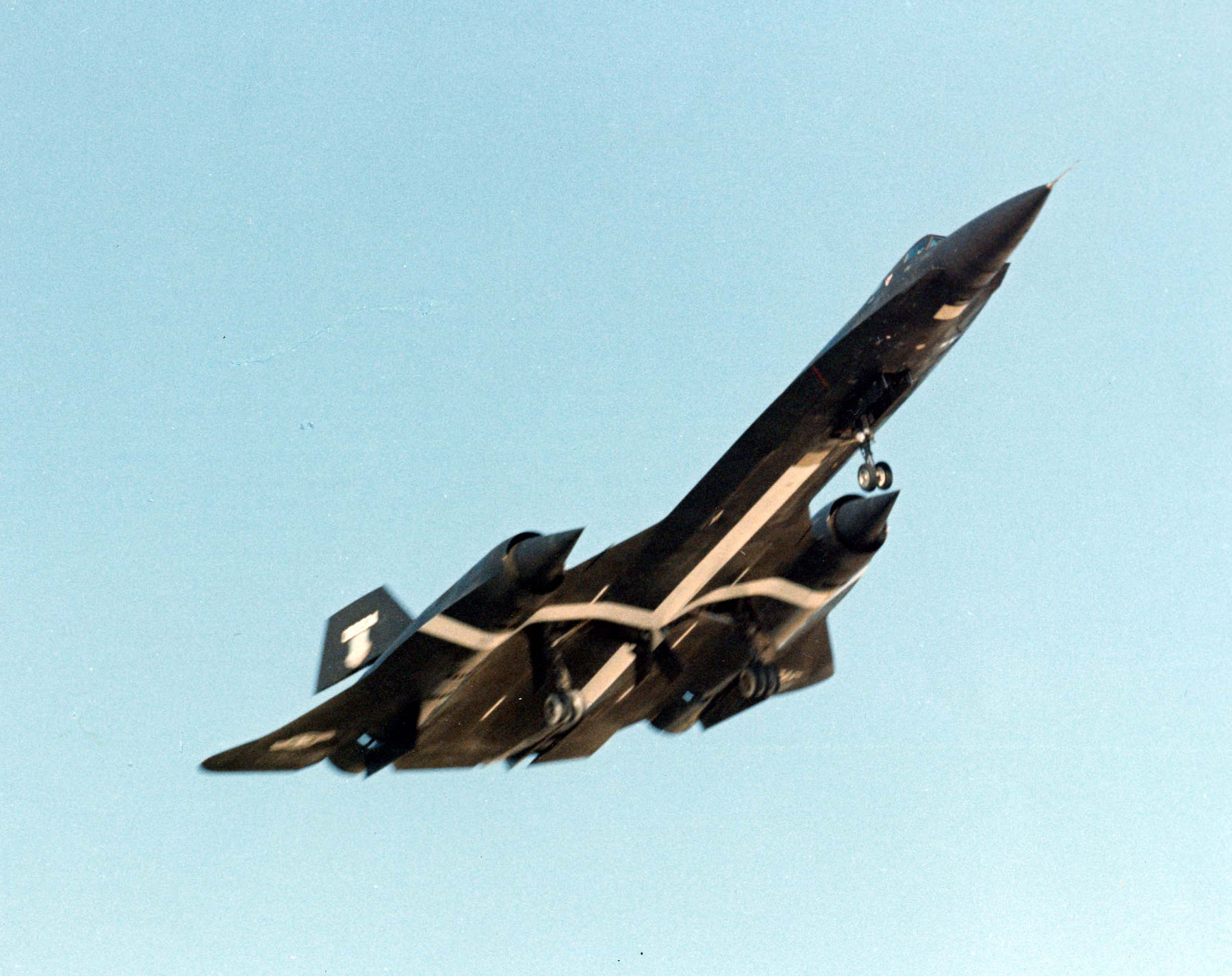
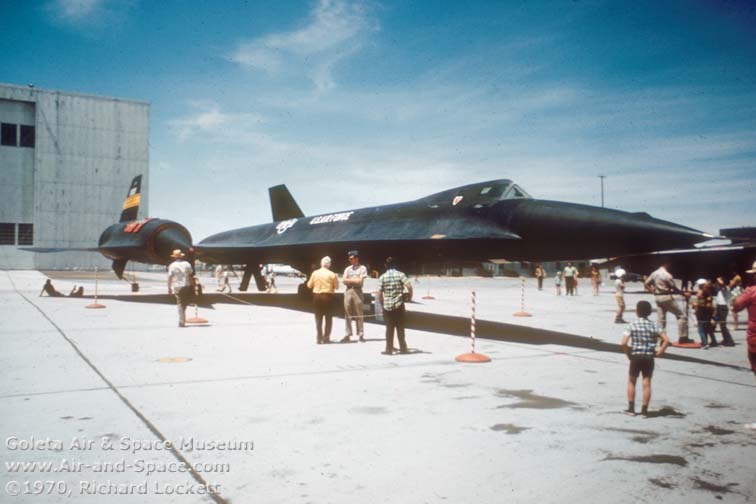
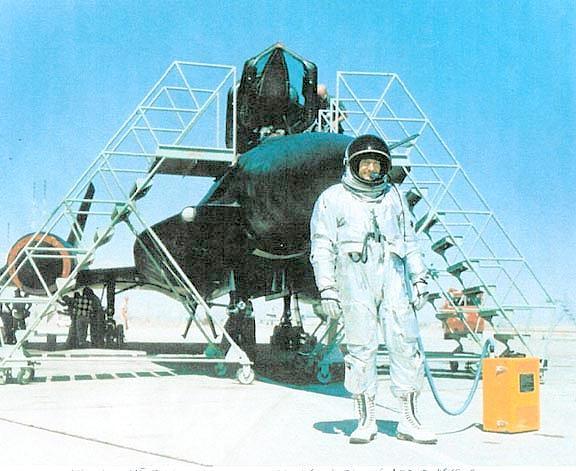

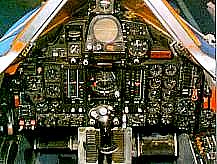
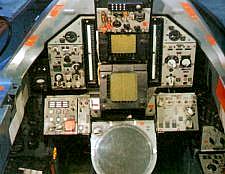
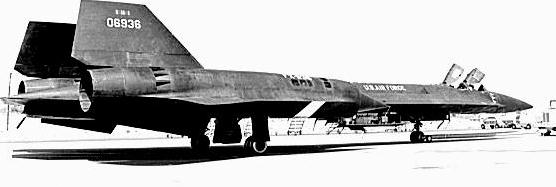
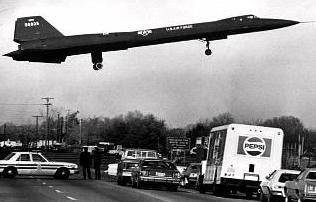
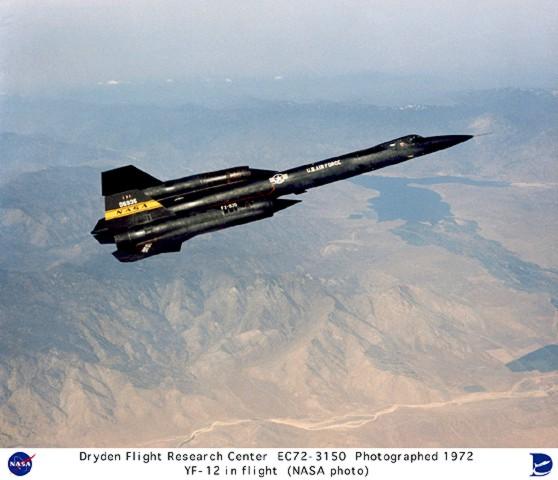
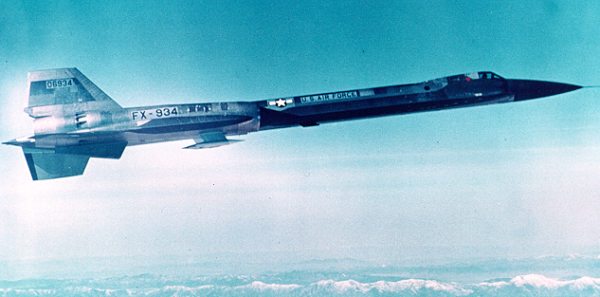
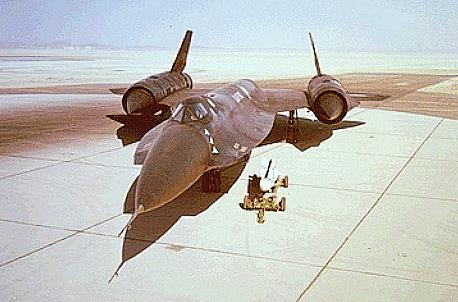
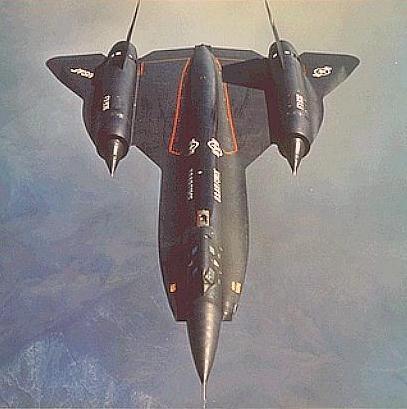
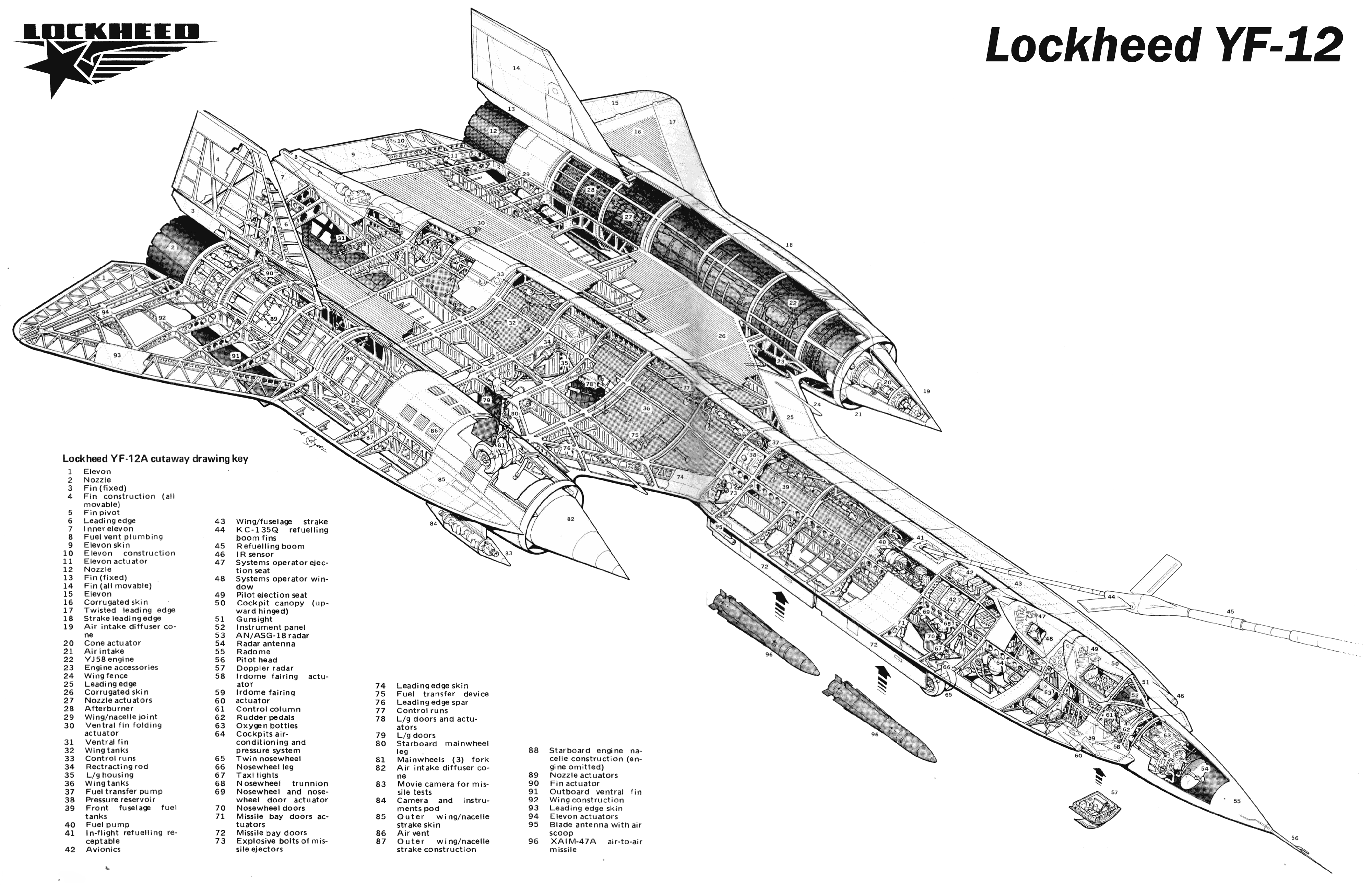

Groom Lake Air Force Base - Area 51
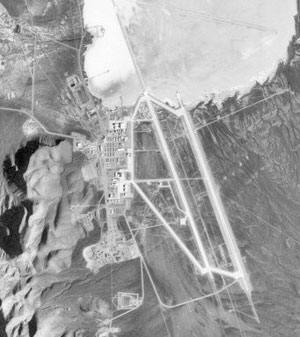
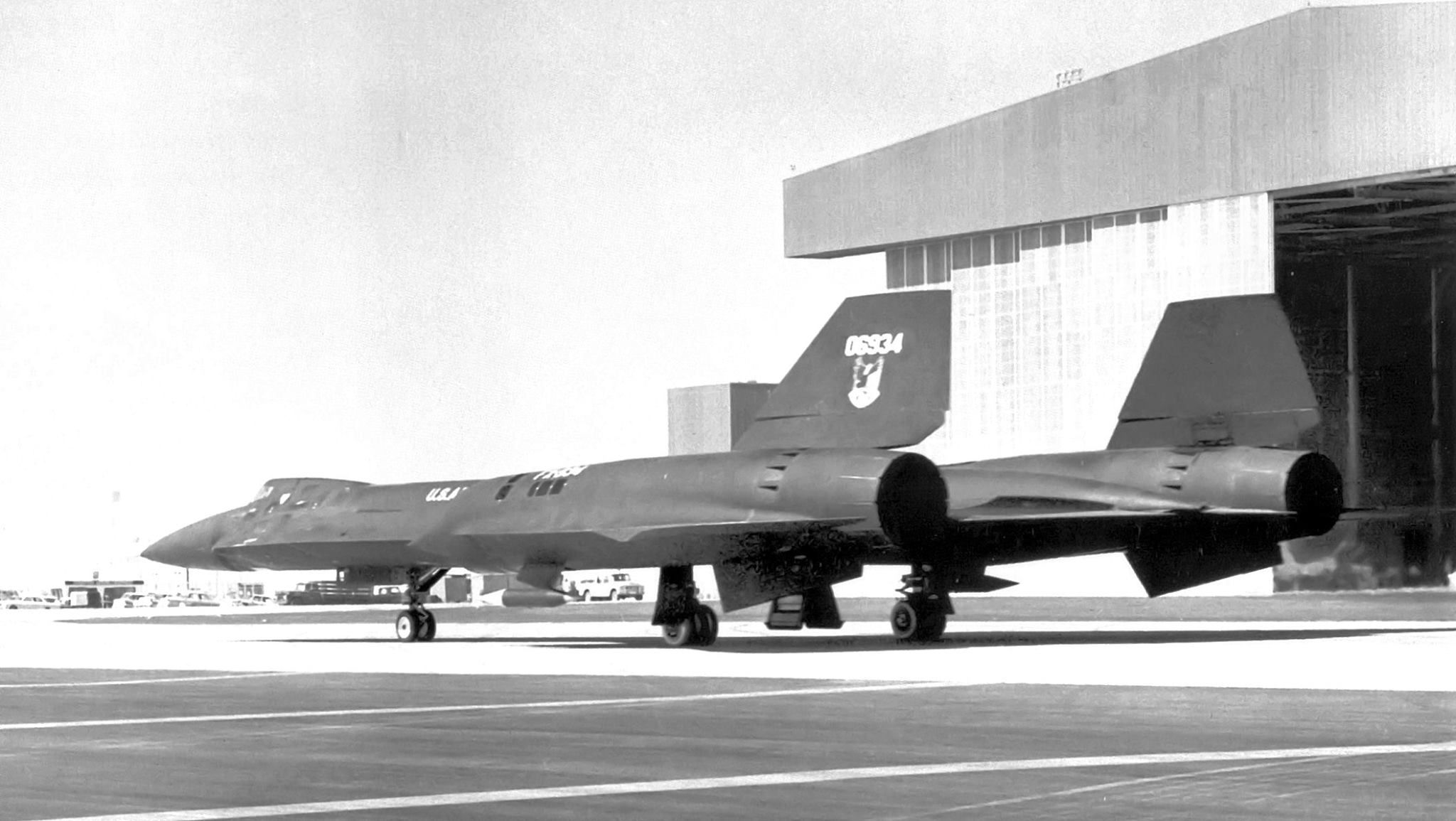
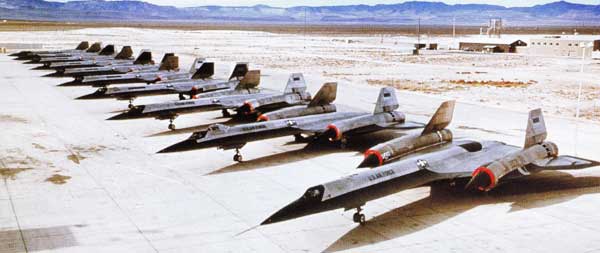



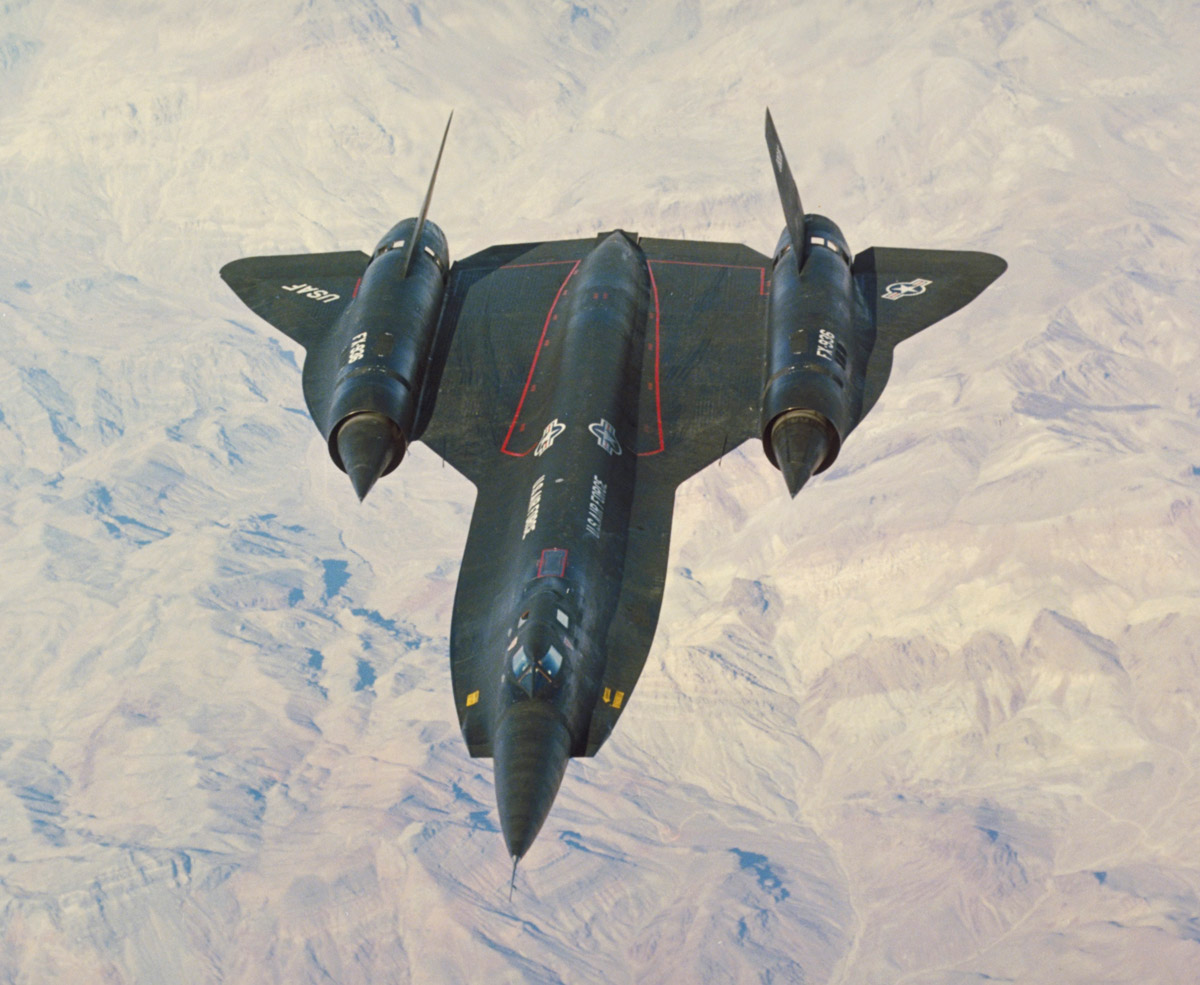



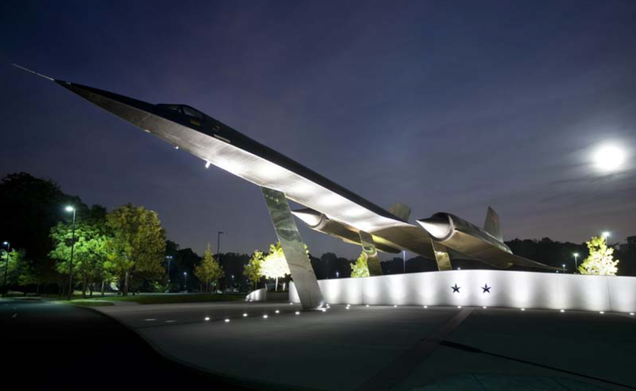
It may look like the SR-71 Blackbird, but this sleek flying beast is not
the most famous supersonic spy plane ever created but its father, the
A-12 Oxcart. In some ways, it was a better machine than the famous
Blackbird. This is its history.
The story of this Mach 3.2 technological wonder starts in 1957
and, like all secret flying things full of gadgets, it's fascinating.
The OXCART program story began in 1957, when a contractor suggested
that high-altitude supersonic flight was the only way to avoid Soviet
air defenses. The CIA's Richard M. Bissell, who was directing the 1954
U-2 spy plane program at the time, was concerned about their
vulnerability to USSR radars and anti-air missiles. He was right: in
1960 the Soviets shot down Francis Gary Powers' U-2 near Sverdlovsk.
By then the A-12 program was already under way: after Lockheed Aircraft
completed "antiradar studies, aerodynamic structural tests, and
engineering designs," the CIA gave the green light to produce the 12
aircraft on January 30th, 1960. It was still called the A-11 at the time
and Lockheed engineer Clarence L. Johnson was the main designer. He
also was responsible for the U-2 but, for some reason and after months
of drawings and wind-tunnel model testing, people were still not
convinced this beast could fly.
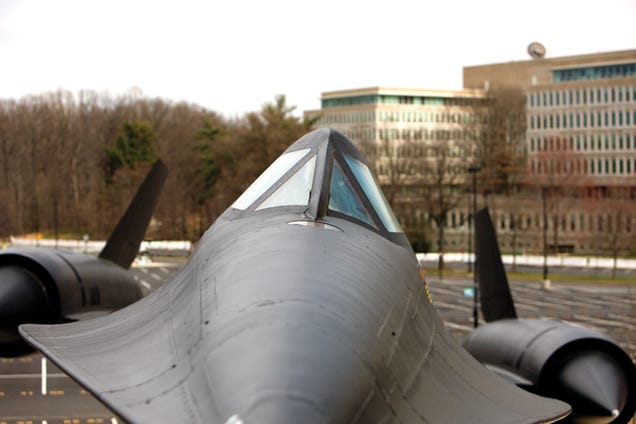
\
It did, but only after years of tests and adjustments. It was a
difficult path. The aircraft skin, for example, had to made out of a
titanium alloy, as it had to resist 550 degrees Fahrenheit temperatures
while flying at top speed. The aircraft manufacturing process, which at
that point only used aluminum frames, was an absolute nightmare. All
machinery broke trying to work the titanium and new tooling parts had to
be designed and created from scratch. As a result, each plane had to be
hand-crafted.
The quest to make its radar signature was also painful. For one year
and a half, a full- scale model of the plane manufactured with new
radar-absorbent materials was tested. Sitting on a pylon in a secret
base and after countless adjustments, it was discovered that adding some
big metallic parts to each side of the fuselage reduced the radar
footprint. Johnson thought it was going to harm the aerodynamics but, in
later flight tests, it was clear it helped the lift. It was all part of
the quest for radar invisibility but, years later, these features were
used by Lockheed in other supersonic designs. As a result of all these
changes to its original design, the plane got its final designation: the
A-12.
A cockpit hell
The interior of the plane was also quite problematic: For reasons of
weight, the plane had to be constructed without almost no thermal
insulation, converting the cockpit into a true oven. As a result, the
pilot had to use an astronaut-like suit with its own refrigeration
system. And probably Clint Eastwood's Firefoxy asbestos underpants too.
Pilots would typically lose up to 5 pounds in a four hour flight.
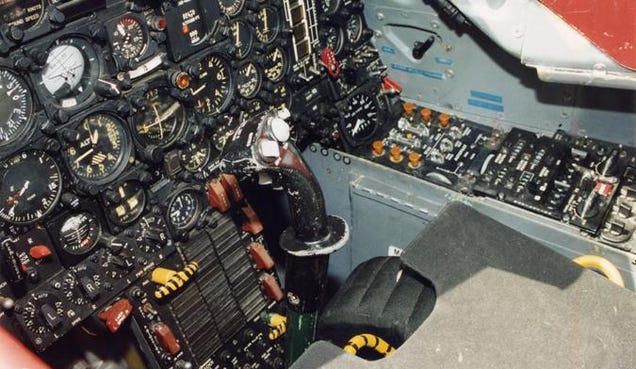
Even the runway had to be specially created for the OXCART program. The initial test ground strip at a secret location in the Nevada desert (the CIA document doesn't mention it but it was probably Area 51) was only 5,000 feet long and incapable of supporting the weight of the A-12. Great for for UFO landings, but it needed pouring 25,000 yards of concrete to achieve the necessary strength and 8,500-feet length necessary for the A-12's take-off and landing.
However, at the end everything was solved and the pilots, who had to be six feet tall, under 175 pounds and come with The Right Stuff
were selected: William L. Skliar, Kenneth S. Collins, Walter Ray, Lon
Walter, Mele Vojvodich, Jr., Jack W. Weeks, Ronald "Jack" Layton, Dennis
B. Sullivan, David P. Young, Francis J. Murray, and Russell Scott were
the heroes' names, chosen to test this wild beast.
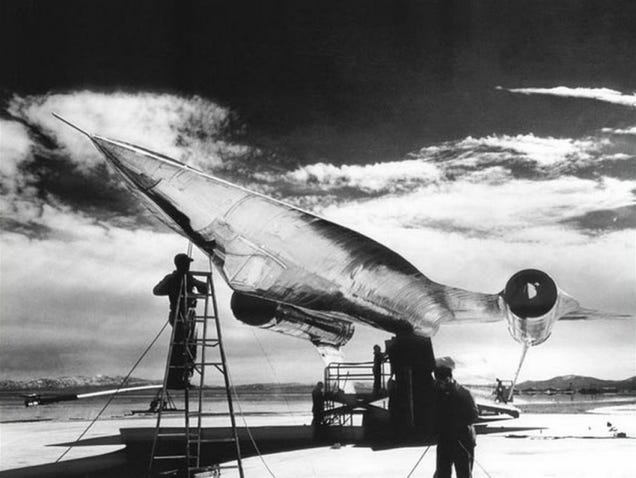
On April 26th 1962, the A-12 took to the skies. Louis Schack piloted it
during its first 40-minute unofficial maiden flight. Four days later,
he also took her into its official maiden flight for 59 minutes. It
wasn't until May 4th that the A-12 broke the sound barrier for the first
time, reaching Mach 1.1. During 1962 the aircraft kept evolving during
flight testing but it wasn't until 1967, after countless delays caused
by political discussions and a couple of accidents, that the A-12 was
employed in real missions. The target: Vietnam.
The first mission was flown on May 31st 1967 and it accomplished all
objectives. The A-12 force kept flying successfully, but was retired in
1968, when the SR-71 Blackbird took its place. Of the final 15 A-12s
produced by Lockheed, five were lost and two pilots were killed. It may
seem like not a lot was achieved, but this aircraft pushed the envelope
in every way imaginable making many of the common concepts of modern
supersonic aviation possible, from aerodynamic design to life support
systems an specially manufacturing processes.
As Ken Collins —one of its pilots— said during the recent unveiling
ceremony by the CIA at Langley: "It was a beautiful airplane, it was a
beautiful airplane to land, and just technically a fantastic airplane to
fly."
And indeed, it was.
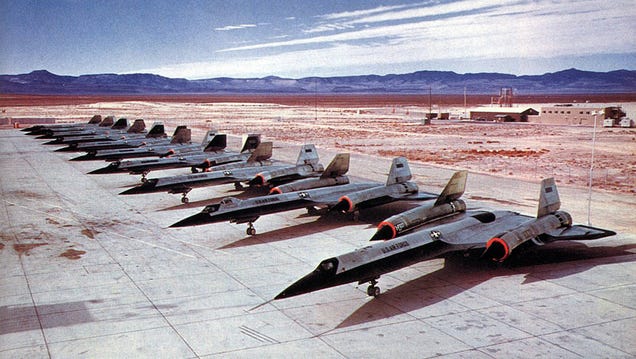
Ten planes survived the 15-plane OXCART program, one of which you can see on the deck of the USS Intrepid in New York City.
A-12 Oxcart vs SR-71 Blackbird
Here are the specs of the two airplanes (many of these remain officially secret, but everyone assumes they are fairly accurate):
| A-12 Oxcart | SR-71A Blackbird | |
| Maximum Speed | Mach 3.35 at 85,000' (Estimated) | Mach 3.2 at 85,000' (Estimated) |
| Max. Ceiling | 95,000 feet | 85,000 feet |
| Max. Range | 2,500 miles | 3,250 miles |
| Wing Span | 55.6 ft. | 55.6 ft. |
| Wing Area | 1,795 sq. ft. | 1,795 sq. ft. |
| Length | 98.75 ft. | 103.8 ft. |
| Empty Weight | 60,000 lbs. | 67,500lbs. |
| Gross Takeoff Wt. | 120,000 lbs. | 152,000 lbs. |
| Sensor Payload | 2,500 lbs. | 3,500 lbs. |
The
key difference between the A-12 Oxcart and the SR-71 Blackbird was the
payload and the unrefueled range. The Blackbird could carry a lot more
at the same time across a longer distance, as it was revealed in this comparison between the two machines, declassified in 2012:
While the A-12 had to swap payloads between missions, the SR-71 could carry these sensors at the same time, as DefenseTech summarized back in 2012:
- two "technical objective cameras"
- two "operational objective cameras"
- one "terrain objective camera"
- one "high resolution" side-looking radar
- one infrared camera
- one electronic and communications intelligence-gathering package
- three electronic warfare (countermeasures) systems, "CFAX, APR 27 and System 13C"
There were
some design differences too. Check out the extra window on the cockpit
of the SR-71 compared on the background to the A-12 on the foreground:

The engines on the SR-71—the Pratt & Whitney J58—were also more powerful than the Pratt & Whitney J75 on the first five A-12 Oxcarts. The following A-12s used the J58 too.
This is a version of a story that ran on September 21, 2007.
Lockheed SR-71 Blackbird
From Wikipedia, the free encyclopedia
"SR-71" redirects here. For other uses, see SR-71 (disambiguation).
| SR-71 "Blackbird" | |
|---|---|
 |
|
| An SR-71B trainer over the Sierra Nevada Mountains of California in 1994. The raised second cockpit is for the instructor. | |
| Role | Strategic reconnaissance aircraft |
| Manufacturer | Lockheed, Skunk Works division |
| Designer | Clarence "Kelly" Johnson |
| First flight | 22 December 1964 |
| Introduction | 1966 |
| Retired | 1999 |
| Primary users | United States Air Force NASA |
| Number built | 32 |
| Developed from | Lockheed A-12 |
The SR-71 served with the U.S. Air Force from 1964 to 1998. A total of 32 aircraft were built; 12 were lost in accidents, but none lost to enemy action.[3][4] The SR-71 has been given several nicknames, including Blackbird and Habu.[5] Since 1976, it has held the world record for the fastest air-breathing manned aircraft, a record previously held by the YF-12.[6][7][8]
Development
Background
Lockheed's previous reconnaissance aircraft was the relatively slow U-2, designed for the Central Intelligence Agency (CIA). The 1960 downing of Francis Gary Powers's U-2 underscored the aircraft's vulnerability and the need for faster reconnaissance aircraft. The CIA turned again to Kelly Johnson and Lockheed's Skunk Works, who developed the A-12[9] and would go on to build upon its design concepts for the SR-71. The Flight Test Engineer in charge was Joseph F. Ware, Jr.[10]The A-12 first flew at Groom Lake (Area 51), Nevada, on 25 April 1962. Thirteen were built; two variants were also developed, including three YF-12A interceptor prototypes, and two M-21 drone carrier variants. The aircraft was meant to be powered by the Pratt & Whitney J58 engine, but development ran over schedule, and it was equipped instead with the less powerful Pratt & Whitney J75. The J58s were retrofitted as they became available, and became the standard powerplant for all subsequent aircraft in the series (A-12, YF-12, M-21) as well as the SR-71. The A-12 flew missions over Vietnam and North Korea before its retirement in 1968. The program's cancellation was announced on 28 December 1966,[11] due both to budget concerns[12] and because of the forthcoming SR-71.
SR-71
During the later period of its testing, the B-70 was proposed for a reconnaissance/strike role, with an RS-70 designation. When it was clear that the A-12 performance potential was much greater, the Air Force ordered a variant of the A-12 in December 1962.[14] Originally named R-12[N 1] by Lockheed, the Air Force version was longer and heavier than the A-12, with a longer fuselage to hold more fuel, two seats in the cockpit, and reshaped chines. Reconnaissance equipment included signals intelligence sensors, a side-looking radar and a photo camera.[14] The CIA's A-12 was a better photo reconnaissance platform than the Air Force's R-12, since the A-12 flew somewhat higher and faster,[12] and with only one pilot it had room to carry a superior camera[12] and more instruments.[15]
During the 1964 campaign, Republican presidential nominee Barry Goldwater repeatedly criticized President Lyndon B. Johnson and his administration for falling behind the Soviet Union in developing new weapons. Johnson decided to counter this criticism by revealing the existence of the YF-12A Air Force interceptor, which also served as cover for the still-secret A-12,[16] and the Air Force reconnaissance model since July 1964. Air Force Chief of Staff General Curtis LeMay preferred the SR (Strategic Reconnaissance) designation and wanted the RS-71 to be named SR-71. Before the July speech, LeMay lobbied to modify Johnson's speech to read SR-71 instead of RS-71. The media transcript given to the press at the time still had the earlier RS-71 designation in places, creating the story that the president had misread the aircraft's designation.[17][N 2]
In 1968, Secretary of Defense Robert McNamara canceled the F-12 interceptor program; the specialized tooling used to manufacture both the YF-12 and the SR-71 was also ordered destroyed.[18] Production of the SR-71 totaled 32 aircraft with 29 SR-71As, 2 SR-71Bs, and the single SR-71C.[19]
Design
The SR-71 was designed for flight at over Mach 3 with a flight crew of two in tandem cockpits, with the pilot in the forward cockpit and the Reconnaissance Systems Officer (RSO) monitoring the surveillance systems and equipment from the rear cockpit.[20] The SR-71 was designed to minimize its radar cross-section, an early attempt at stealth design.[21] Finished aircraft were painted a dark blue, almost black, to increase the emission of internal heat and to act as camouflage against the night sky. The dark color led to the aircraft's call sign "Blackbird".Airframe
On most aircraft, use of titanium was limited by the costs involved in procurement and manufacture. It was generally used only in components exposed to the highest temperatures, such as exhaust fairings and the leading edges of wings. On the SR-71, titanium was used for 85% of the structure, with much of the rest polymer composite materials.[22] To control costs, Lockheed used a more easily worked alloy of titanium which softened at a lower temperature.[N 3]The challenges posed by the SR-71 led Lockheed to develop entirely new fabrication methods to enable its manufacture, and have since been used in the manufacture of many other aircraft. Welding the titanium requires distilled water, as the chlorine present in tap water is corrosive; commonplace cadmium-plated tools could not be used as they also caused corrosion.[23] Metallurgical contamination was another problem; at one point 80% of the delivered titanium for manufacture was rejected on these grounds.[24][25]
Cooling was carried out by cycling fuel behind the titanium surfaces in the chines. On landing, the canopy temperature was over 300 °C (572 °F).[26]
The red stripes on some SR-71s were to prevent maintenance workers from damaging the skin. Near the center of the fuselage, the curved skin was thin and delicate, with no support from the structural ribs, which were spaced several feet apart.[27]
Stealth and threat avoidance

The SR-71 carried electronic countermeasures, but its greatest protection was its high speed and cruising altitude that made it almost invulnerable to the weapons of its day. Merely accelerating would typically be enough to evade a surface-to-air missile,[2] and the plane was faster than the Soviet Union's principal interceptor, the MiG-25.[30] During its service life, no SR-71 was shot down.[3]
Chines
Aerodynamicists discovered that the chines generated powerful vortices and created additional lift, leading to unexpected aerodynamic performance improvements.[33] The angle of incidence of the delta wings could then be reduced for greater stability and less drag at high speeds; more weight, such as fuel, could be carried to increase range. Landing speeds were also reduced, since the chines' vortices created turbulent flow over the wings at high angles of attack, making it harder for the wings to stall. High-alpha turns were limited by the capability of the engine inlets to ingest air, possibly resulting in flameout.[34] Pilots were thus warned not to pull more than 3 g and to avoid high angles of attack. The chines also acted like the leading-edge extensions that increase the agility of modern fighters such as the F-5, F-16, F/A-18, MiG-29 and Su-27. The addition of chines also enabled the removal of the planned canard foreplanes.[N 4][35][36]
Air inlets
The air inlets allowed the SR-71 to cruise at over Mach 3.2 while keeping airflow into the engines at the initial subsonic speeds. Mach 3.2 was the design point for the aircraft, its most efficient speed.[26] At the front of each inlet, a pointed, movable cone called a "spike" was locked in its full forward position on the ground and during subsonic flight. When the aircraft accelerated past Mach 1.6, an internal jackscrew moved the spike up to 26 inches (66 cm) inwards,[37] directed by an analog air inlet computer that took into account pitot-static, pitch, roll, yaw, and angle of attack. Moving the spike tip drew the shock wave riding on it closer to the inlet cowling until it touched just slightly inside the cowling lip. This position reflected the spike shock-wave repeatedly between the spike centerbody and the inlet inner cowl sides, and minimized airflow spillage which is the cause of spillage drag. The air slowed supersonically with a final plane shock wave at entry to the subsonic diffuser.[38]Downstream of this "normal" shock wave the air is subsonic. It decelerates further in the divergent duct to give the required speed at entry to the compressor. Capture of the plane shock wave within the inlet is called "Starting the Inlet". Bleed tubes and bypass doors were designed into the inlet and engine nacelles to handle some of this pressure and to position the final shock to allow the inlet to remain "started". The SR-71 was sometimes more efficient at speeds higher than Mach 3.2 in terms of pounds of fuel burned per nautical mile traveled. This depended on the outside air temperature. During one mission, SR-71 pilot Brian Shul flew faster than usual for some time to avoid multiple interception attempts; afterwards, it was discovered that this had reduced fuel consumption.[39]
In the early years of operation, the analog computers would not always keep up with rapidly changing flight environmental inputs. If internal pressures became too great and the spike was incorrectly positioned, the shock wave would suddenly blow out the front of the inlet, called an "Inlet Unstart." During unstarts afterburner extinctions were common. The remaining engine's asymmetrical thrust would cause the aircraft to yaw violently to one side. SAS, autopilot, and manual control inputs would fight the yawing, but often the extreme off-angle would reduce airflow in the opposite engine and stimulate "sympathetic stalls". This generated a rapid counter-yawing, often coupled with loud "banging" noises, and a rough ride during which crews' helmets would sometimes strike their cockpit canopies.[40] One response to a single unstart was unstarting both inlets to prevent yawing, then restarting them both.[41] Lockheed later installed an electronic control to detect unstart conditions and perform this reset action without pilot intervention.[42] Beginning in 1980, the analog inlet control system was replaced by a digital system, which reduced unstart instances.[43]
Engines
Air was initially compressed (and heated) by the inlet spike and subsequent converging duct between the centerbody and inlet cowl. The shock waves generated slowed the air to subsonic speeds relative to the engine. The air then entered the engine compressor. Some of this compressor flow (20% at cruise) was removed after the 4th compressor stage and went straight to the afterburner through six bypass tubes. The air passing through the turbojet was compressed further by the remaining 5 compressor stages and then fuel was added to it in the combustion chamber. After passing through the turbine the exhaust, together with the compressor bleed air, entered the afterburner.[46]
At around Mach 3, the temperature rise from the intake compression, added to the engine compressor temperature rise, reduced the allowable fuel flow because the turbine temperature limit did not change. The rotating machinery produced less power but still enough to run at 100% RPM, thus keeping the airflow through the intake constant. The rotating machinery had become a drag item[47] and the engine thrust at high speeds came from the afterburner temperature rise.[48] The maximum flight speed was limited by the temperature of the air entering the engine compressor at 800 °F (427 °C). The engines were not certified beyond that temperature.[49]
Fuel
Several exotic fuels were investigated for the Blackbird. Development began on a coal slurry powerplant, but Johnson determined that the coal particles damaged important engine components.[26] Research was conducted on a liquid hydrogen powerplant, but the tanks for storing cryogenic hydrogen were not of a suitable size or shape.[26] In practice, the Blackbird would burn somewhat conventional JP-7 which was difficult to light. To start the engines, triethylborane (TEB), which ignites on contact with air, was injected to produce temperatures high enough to ignite the JP-7. The TEB produced a characteristic green flame, which could often be seen during engine ignition.[39]Aerial refueling
As an aid to the pilot when refueling, the cockpit was fitted with a peripheral vision horizon display (PVHD). This unusual instrument displayed a barely-visible artificial horizon, which gave the pilot subliminal cues on aircraft attitude.[52]
The USAF sought a precision navigation system for maintaining route accuracy and target tracking at very high speeds.[citation needed] Nortronics, Northrop's electronics development division, had developed an astro-inertial navigation system (ANS), which could correct navigation errors with celestial observations, for the SM-62 Snark missile, and a separate system for the ill-fated AGM-48 Skybolt missile, the latter of which was adapted for the SR-71.[53][verification needed]
Before each takeoff, a primary alignment brought the ANS's inertial components to a high degree of accuracy. Once in flight, the ANS, which sat behind the Reconnaissance Systems Officer (RSO)'s position, tracked stars through a circular window of quartz glass set in the upper fuselage.[39] Its "blue light" source star tracker, which could see stars during both day and night, would continuously track a variety of stars as the aircraft's changing position brought them into view. The system's digital computer ephemeris contained data on 56 (later 61) stars.[54] The ANS could supply altitude and position to flight controls and other systems, including the Mission Data Recorder, Auto-Nav steering to preset destination points, automatic pointing and control of cameras and sensors, and optical or SLR sighting of fix points loaded into the ANS before takeoff.[55] Former pilot Richard Graham told an interviewer at the Frontiers of Flight Museum that the navigation system was good enough to limit drift to 1,000 feet off the direction of travel at Mach 3.[56]
The original B-1A Offensive Avionics Request For Proposal (RFP) required the installation and integration of an NAS-14 system, but cost-cutting changes later deleted it from the B-1. Some U-2Rs did receive the NAS-21 system, but newer inertial and GPS systems replaced them.
Sensors and payloads
The SR-71 originally included optical/infrared imagery systems; side-looking airborne radar (SLAR); electronic intelligence (ELINT) gathering systems; defensive systems for countering missile and airborne fighters; and recorders for SLAR, ELINT and maintenance data.[citation needed] The SR-71 carried a Fairchild tracking camera and an HRB Singer infrared camera, both of which ran during the entire mission for route documentation, to respond to any accusations of overflight.[citation needed]Because the SR-71 carried an observer behind the pilot, it could not use the A-12's principal sensor, a single large-focal-length optical camera that sat in the "Q-Bay" behind the cockpit. Instead, camera systems could be located either in the wing chines or the aircraft's interchangeable nose. Wide-area imaging was provided by two of Itek's Operational Objective Cameras (OOCs), which provided stereo imagery across the width of the flight track, or an Itek Optical Bar Camera (OBC), which gave continuous horizon-to horizon coverage. A closer view of the target area was given by the HYCON Technical Objective Camera (TEOC), that could be directed up to 45 degrees left or right of the centerline.[57] Initially, the TEOCs could not match the resolution of the A-12's larger camera, but rapid improvements in both the camera and film improved this performance.[57][58]
Side-looking radar, built by Goodyear Aerospace, could be carried in the removable nose. In later life, the radar was replaced by Loral's Advanced Synthetic Aperture Radar System (ASARS-1). Both the first SLR and ASARS-1 were ground-mapping imaging systems, collecting data either in fixed swaths left or right of centerline or from a spot location for higher resolution.[57] ELINT-gathering systems, called the Electro Magnetic Reconnaissance System (EMR), built by AIL could be carried in the chine bays to analyse electronic signal fields being passed through, and were pre-programmed to identify items of interest.[57][59]
Over its operational life, the Blackbird carried various electronic countermeasures, including warning and active electronic systems built by several ECM companies and called Systems A, A2, A2C, B, C, C2, E, G, H and M. On a given mission, an aircraft would carry several of these frequency/purpose payloads to meet the expected threats.[citation needed] After landing, recording systems and gathered information from the SLR and ELINT systems, and the Maintenance Data Recorder (MDR) were subjected to post-flight ground analysis. In the later years of its operational life, a data-link system could send ASARS-1 and ELINT data from about 2,000 nmi (3,700 km) of track coverage to a suitably equipped ground station.[citation needed]
Life support
Flying at 80,000 ft (24,000 m) meant that crews could not use standard masks, which could not provide enough oxygen above 43,000 ft (13,000 m). Specialized protective pressurized suits were produced by the David Clark Company for the A-12, YF-12, M-21 and SR-71. Furthermore, an emergency ejection at Mach 3.2 would subject crews to temperatures of about 450 °F (230 °C); thus, during a high altitude ejection scenario, an onboard oxygen supply would keep the suit pressurized during the descent.[citation needed]The cockpit could be pressurized to an altitude of 10,000 or 26,000 ft (3,000 or 7,900 m) during flight.[60] The cabin needed a heavy-duty cooling system, for cruising at Mach 3.2 would heat the aircraft's external surface well beyond 500 °F (260 °C)[61] and the inside of the windshield to 250 °F (120 °C). An air conditioner used a heat exchanger to dump heat from the cockpit into the fuel prior to combustion.[citation needed]
Operational history
The first flight of an SR-71 took place on 22 December 1964, at Air Force Plant 42 in Palmdale, California.[62] The SR-71 reportedly reached a top speed of Mach 3.4 during flight testing.[63][verification needed] The first SR-71 to enter service was delivered to the 4200th (later, 9th) Strategic Reconnaissance Wing at Beale Air Force Base, California, in January 1966.[64]SR-71s first arrived at the 9th SRW's Operating Location (OL-8) at Kadena Air Base, Okinawa on 8 March 1968.[65] These deployments were code named "Glowing Heat", while the program as a whole was code named "Senior Crown". Reconnaissance missions over North Vietnam were code named "Giant Scale". On 21 March 1968, Major (later General) Jerome F. O'Malley and Major Edward D. Payne flew the first operational SR-71 sortie in SR-71 serial number 61-7976 from Kadena AB, Okinawa.[65] During its career, this aircraft (976) accumulated 2,981 flying hours and flew 942 total sorties (more than any other SR-71), including 257 operational missions, from Beale AFB; Palmdale, California; Kadena Air Base, Okinawa, Japan; and RAF Mildenhall, UK. The aircraft was flown to the National Museum of the United States Air Force near Dayton, Ohio in March 1990.
From the beginning of the Blackbird's reconnaissance missions over enemy territory (North Vietnam, Laos, etc.) in 1968, the SR-71s averaged approximately one sortie a week for nearly two years. By 1970, the SR-71s were averaging two sorties per week, and by 1972, they were flying nearly one sortie every day. Two SR-71s were lost during these missions, one in 1970 and the second aircraft in 1972, both due to mechanical malfunctions.[66][67]
Swedish Air Force fighter pilots, using the predictable patterns of SR-71 routine flights over the Baltic Sea, managed to lock their radar on the SR-71 on numerous occasions. Despite heavy jamming from the SR-71, target illumination was maintained by feeding target location from ground-based radars to the fire-control computer in the JA 37 Viggen interceptor.[68] The most common site for the lock-on to occur was the thin stretch of international airspace between Öland and Gotland that the SR-71 used on the return flight.[69][70][71]
Operational highlights for the entire Blackbird family (YF-12, A-12, and SR-71) as of about 1990 included:[72]
- 3,551 Mission Sorties Flown
- 17,300 Total Sorties Flown
- 11,008 Mission Flight Hours
- 53,490 Total Flight Hours
- 2,752 hours Mach 3 Time (Missions)
- 11,675 hours Mach 3 Time (Total)
Initial retirement
In the 1970s, the SR-71 was placed under closer Congressional scrutiny and, with budget concerns, the program was soon under attack. Both Congress and the USAF sought to focus on newer projects like the B-1 Lancer and upgrades to the B-52 Stratofortress, whose replacement was being developed.The SR-71 had never gathered significant supporters within the Air Force, making it an easy target for cost-conscious politicians. Dick Cheney told the Senate Appropriations Committee that the SR-71 cost $85,000 per hour to operate.[74] Opponents of the program estimated it cost $400 million per year to support; that number was subsequently reduced to $260 million. Also, parts were no longer being manufactured for the aircraft, so other airframes had to be cannibalized to keep the fleet airworthy. The aircraft's lack of a datalink (unlike the Lockheed U-2) meant that imagery and radar data could not be used in real time, but had to wait until the aircraft returned to base. The Air Force saw the SR-71 as a bargaining chip which could be sacrificed to ensure the survival of other priorities. A general misunderstanding of the nature of aerial reconnaissance and a lack of knowledge about the SR-71 in particular (due to its secretive development and usage) was used by detractors to discredit the aircraft, with the assurance given that a replacement was under development. In 1988, Congress was convinced to allocate $160,000 to keep six SR-71s (along with a trainer model) in flyable storage that would allow the fleet to become airborne within 60 days. The USAF refused to spend the money. While the SR-71 survived attempts to retire it in 1988, partly due to the unmatched ability to provide high-quality coverage of the Kola Peninsula for the US Navy,[75] the decision to retire the SR-71 from active duty came in 1989, with the SR-71 flying its last missions in October that year.[76]
Funds were redirected to the financially troubled B-1 Lancer and B-2 Spirit programs. Four months after the plane's retirement, General Norman Schwarzkopf, Jr., was told that the expedited reconnaissance which the SR-71 could have provided was unavailable during Operation Desert Storm.[77]
Reactivation
Due to increasing unease about political conditions in the Middle East and North Korea, the U.S. Congress re-examined the SR-71 beginning in 1993.[77] At a hearing of the Senate Committee on Armed Services, Senator J. James Exon asked Admiral Richard C. Macke:If we have the satellite intelligence that you collectively would like us to have, would that type of system eliminate the need for an SR-71... Or even if we had this blanket up there that you would like in satellites, do we still need an SR-71?Macke replied,
From the operator's perspective, what I need is something that will not give me just a spot in time but will give me a track of what is happening. When we are trying to find out if the Serbs are taking arms, moving tanks or artillery into Bosnia, we can get a picture of them stacked up on the Serbian side of the bridge. We do not know whether they then went on to move across that bridge. We need the [data] that a tactical, an SR-71, a U-2, or an unmanned vehicle of some sort, will give us, in addition to, not in replacement of, the ability of the satellites to go around and check not only that spot but a lot of other spots around the world for us. It is the integration of strategic and tactical."[78]Rear Admiral Thomas F. Hall addressed the question of why the SR-71 was retired, saying it was under "the belief that, given the time delay associated with mounting a mission, conducting a reconnaissance, retrieving the data, processing it, and getting it out to a field commander, that you had a problem in timelines that was not going to meet the tactical requirements on the modern battlefield. And the determination was that if one could take advantage of technology and develop a system that could get that data back real time... that would be able to meet the unique requirements of the tactical commander." Hall stated that "the Advanced Airborne Reconnaissance System, which was going to be an unmanned UAV" would meet the requirements but was not affordable at the time. He said that they were "looking at alternative means of doing [the job of the SR-71]."[78]
Macke told the committee that they were "flying U-2s, RC-135s, [and] other strategic and tactical assets" to collect information in some areas.[78] Senator Robert Byrd and other Senators complained that the "better than" successor to the SR-71 had yet to be developed at the cost of the "good enough" serviceable aircraft. They maintained that, in a time of constrained military budgets, designing, building, and testing an aircraft with the same capabilities as the SR-71 would be impossible.[72]
Congress' disappointment with the lack of a suitable replacement for the Blackbird was cited concerning whether to continue funding imaging sensors on the U-2. Congressional conferees stated the "experience with the SR-71 serves as a reminder of the pitfalls of failing to keep existing systems up-to-date and capable in the hope of acquiring other capabilities."[72] It was agreed to add $100 million to the budget to return three SR-71s to service, but it was emphasized that this "would not prejudice support for long-endurance UAVs [such as the Global Hawk]." The funding was later cut to $72.5 million.[72] The Skunk Works was able to return the aircraft to service under budget at $72 million.[79]
Colonel Jay Murphy (USAF Retired) was made the Program Manager for Lockheed's reactivation plans. Retired Air Force Colonels Don Emmons and Barry MacKean were put under government contract to remake the plane's logistic and support structure. Still-active Air Force pilots and Reconnaissance Systems Officers (RSOs) who had worked with the aircraft were asked to volunteer to fly the reactivated planes. The aircraft was under the command and control of the 9th Reconnaissance Wing at Beale Air Force Base and flew out of a renovated hangar at Edwards Air Force Base. Modifications were made to provide a data-link with "near real-time" transmission of the Advanced Synthetic Aperture Radar's imagery to sites on the ground.[72]
Final retirement
The reactivation met much resistance: the Air Force had not budgeted for the aircraft, and UAV developers worried that their programs would suffer if money was shifted to support the SR-71s. Also, with the allocation requiring yearly reaffirmation by Congress, long-term planning for the SR-71 was difficult.[72] In 1996, the Air Force claimed that specific funding had not been authorized, and moved to ground the program. Congress reauthorized the funds, but, in October 1997, President Bill Clinton attempted to use the line-item veto to cancel the $39 million allocated for the SR-71. In June 1998, the Supreme Court of the United States ruled that the line-item veto was unconstitutional. All this left the SR-71's status uncertain until September 1998, when the Air Force called for the funds to be redistributed. The plane was permanently retired in 1998. The Air Force quickly disposed of its SR-71s, leaving NASA with the two last airworthy Blackbirds until 1999.[80] All other Blackbirds have been moved to museums except for the two SR-71s and a few D-21 drones retained by the NASA Dryden Flight Research Center.[79]SR-71 timeline
Important dates pulled from many sources.[81][unreliable source?]- 24 December 1957: First J58 engine run.
- 1 May 1960: Francis Gary Powers is shot down in a Lockheed U-2 over the Soviet Union.
- 13 June 1962: SR-71 mock-up reviewed by Air Force.
- 30 July 1962: J58 completes pre-flight testing.
- 28 December 1962: Lockheed signs contract to build six SR-71 aircraft.
- 25 July 1964: President Johnson makes public announcement of SR-71.
- 29 October 1964: SR-71 prototype (AF Ser. No. 61-7950) delivered to Air Force Plant 42 at Palmdale, California.
- 7 December 1964: Beale AFB, CA, announced as base for SR-71.
- 22 December 1964: First flight of the SR-71 with Lockheed test pilot Bob Gilliland at Air Force Plant #42.
- 21 July 1967: Jim Watkins and Dave Dempster fly first international sortie in SR-71A, AF Ser. No. 61-7972, when the Astro-Inertial Navigation System (ANS) fails on a training mission and they accidentally fly into Mexican airspace.
- 3 November 1967: A-12 and SR-71 conduct a reconnaissance fly-off. Results are questionable.
- 5 February 1968: Lockheed ordered to destroy A-12, YF-12, and SR-71 tooling.
- 8 March 1968: First SR-71A (AF Ser. No. 61-7978) arrives at Kadena AB, Okinawa to replace A-12s.
- 21 March 1968: First SR-71 (AF Ser. No. 61-7976) operational mission flown from Kadena AB over Vietnam.
- 29 May 1968: CMSgt Bill Gornik begins the tie-cutting tradition of Habu crews' neckties.
- 3 December 1975: First flight of SR-71A (AF Ser. No. 61-7959) in "Big Tail" configuration.
- 20 April 1976: TDY operations started at RAF Mildenhall, United Kingdom with SR-71A, AF Ser. No. 61-7972.
- 27–28 July 1976: SR-71A sets speed and altitude records (Altitude in Horizontal Flight: 85,068.997 ft (25,929.030 m) and Speed Over a Straight Course: 2,193.167 miles per hour (3,529.560 km/h)).
- August 1980: Honeywell starts conversion of AFICS to DAFICS.
- 15 January 1982: SR-71B, AF Ser. No. 61-7956, flies its 1,000th sortie.
- 21 April 1989: SR-71, AF Ser. No. 61-7974, is lost due to an engine explosion after taking off from Kadena AB. This is the last Blackbird to be lost, and is the first SR-71 accident in 17 years.[3][4]
- 22 November 1989: Air Force SR-71 program officially terminated.
- 21 January 1990: Last SR-71, AF Ser. No. 61-7962, leaves Kadena AB.
- 26 January 1990: SR-71 is decommissioned at Beale AFB, CA.
- 6 March 1990: Last SR-71 flight under SENIOR CROWN program, setting four speed records en route to Smithsonian Institution.
- 25 July 1991: SR-71B, AF Ser. No. 61-7956/NASA #831 officially delivered to NASA Dryden Flight Research Center at Edwards AFB, California.
- October 1991: NASA engineer Marta Bohn-Meyer becomes the first female SR-71 crew member.
- 28 September 1994: Congress votes to allocate $100 million for reactivation of three SR-71s.
- 26 April 1995: First reactivated SR-71A (AF Ser. No. 61-7971) makes its first flight after restoration by Lockheed.
- 28 June 1995: First reactivated SR-71 returns to Air Force as Detachment 2.
- 28 August 1995: Second reactivated SR-71A (AF Ser. No. 61-7967) makes first flight after restoration.
- 2 August 1997: A NASA SR-71 makes multiple flybys at the EAA AirVenture Oshkosh air show. It is then supposed to perform a sonic boom at 53,000 feet (16,000 m) after a midair refueling, but a fuel flow problem causes it to divert to Milwaukee. Two weeks later, the pilot's flight path brings him over Oshkosh again, and there is, in fact, a sonic boom.
- 19 October 1997: The last flight of SR-71B, AF Ser. No. 61-7956 at Edwards AFB Open House.
- 9 October 1999: The last flight of the SR-71 (AF Ser. No. 61-7980/NASA 844).
- September 2002: Final resting places of aircraft #956, #971, and #980 are made known.[82]
- 15 December 2003: SR-71, AF Ser. No. 61-7972, goes on display at the Smithsonian National Air and Space Museum's Steven F. Udvar-Hazy Center at Washington Dulles International Airport in Chantilly, Virginia.
Records
The SR-71 also holds the "Speed Over a Recognized Course" record for flying from New York to London—distance 3,508 miles (5,646 km), 1,435.587 miles per hour (2,310.353 km/h), and an elapsed time of 1 hour 54 minutes and 56.4 seconds—set on 1 September 1974 while flown by U.S. Air Force Pilot Maj. James V. Sullivan and Maj. Noel F. Widdifield, reconnaissance systems officer (RSO).[87] This equates to an average velocity of about Mach 2.68, including deceleration for in-flight refueling. Peak speeds during this flight were likely closer to the declassified top speed of Mach 3.2+. For comparison, the best commercial Concorde flight time was 2 hours 52 minutes and the Boeing 747 averages 6 hours 15 minutes.
On 26 April 1971, 61-7968, flown by Majors Thomas B. Estes and Dewain C. Vick, flew over 15,000 miles (24,000 km) in 10 hrs. 30 min. This flight was awarded the 1971 Mackay Trophy for the "most meritorious flight of the year" and the 1972 Harmon Trophy for "most outstanding international achievement in the art/science of aeronautics".[88]
When the SR-71 was retired in 1990, one Blackbird was flown from its birthplace at United States Air Force Plant 42 in Palmdale, California, to go on exhibit at what is now the Smithsonian Institution's Steven F. Udvar-Hazy Center in Chantilly, Virginia.[89] On 6 March 1990, Lt. Col. Raymond E. "Ed" Yielding and Lt. Col. Joseph T. "JT" Vida piloted SR-71 S/N 61-7972 on its final Senior Crown flight and set four new speed records in the process.
- Los Angeles, CA, to Washington, D.C., distance 2,299.7 miles (3,701.0 km), average speed 2,144.8 miles per hour (3,451.7 km/h), and an elapsed time of 64 minutes 20 seconds.[87]
- West Coast to East Coast, distance 2,404 miles (3,869 km), average speed 2,124.5 miles per hour (3,419.1 km/h), and an elapsed time of 67 minutes 54 seconds.
- Kansas City, Missouri, to Washington, D.C., distance 942 miles (1,516 km), average speed 2,176 miles per hour (3,502 km/h), and an elapsed time of 25 minutes 59 seconds.
- St. Louis, Missouri, to Cincinnati, Ohio, distance 311.4 miles (501.1 km), average speed 2,189.9 miles per hour (3,524.3 km/h), and an elapsed time of 8 minutes 32 seconds.
Mr. President, the termination of the SR-71 was a grave mistake and could place our nation at a serious disadvantage in the event of a future crisis. Yesterday's historic transcontinental flight was a sad memorial to our short-sighted policy in strategic aerial reconnaissance.
Successor
Much speculation existed regarding a replacement for the SR-71, most notably the rumored aircraft codenamed Aurora. This is due to limitations of spy satellites, which are governed by the laws of orbital mechanics. It may take up to 24 hours before a satellite is in proper orbit to photograph a particular target, far longer than a reconnaissance plane. Spy planes can provide the most current intelligence information and collect it when lighting conditions are optimum. The fly-over orbit of spy satellites may also be predicted and can allow the enemy to hide assets when they know the satellite is above, a drawback not shared by spy planes. These factors have led many to doubt that the US has abandoned the concept of spy planes to complement reconnaissance satellites.[92] Unmanned aerial vehicles (UAVs) are also used for much aerial reconnaissance in the 21st century. They have the advantage of being able to overfly hostile territory without putting human pilots at risk, as well as being smaller and harder to detect than a man-carrying aircraft.On 1 November 2013, media outlets reported that Skunk Works has been working on an unmanned reconnaissance airplane it has named SR-72, which would fly twice as fast at Mach 6.[93][94] However, the Air Force is officially pursuing the Northrop Grumman RQ-180 UAV to take up the SR-71's strategic ISR role.[95]
Variants
- SR-71A was the main production variant.
- SR-71B was a trainer variant.[96]
- SR-71C was a hybrid aircraft composed of the rear fuselage of the first YF-12A (S/N 60-6934) and the forward fuselage from an SR-71 static test unit. The YF-12 had been wrecked in a 1966 landing accident. This Blackbird was seemingly not quite straight and had a yaw at supersonic speeds.[97] It was nicknamed "The Bastard".[98][99]
Accidents and aircraft disposition
Notes: Many secondary references use apparently incorrect 64- series aircraft serial numbers (e.g. SR-71C 64-17981), but no primary government documents have been found to support this.[105]
After completion of all USAF and NASA SR-71 operations at Edwards AFB, the SR-71 Flight Simulator was moved in July 2006 to the Frontiers of Flight Museum at Love Field Airport in Dallas, Texas.[106]
Operators
United States Air ForceStrategic Air Command
- 9th Strategic Reconnaissance Wing - Beale AFB, California
-
- 1st Strategic Reconnaissance Squadron 1966-90
- 99th Strategic Reconnaissance Squadron 1966-71
- Detachment 1; Kadena AB, Japan 1968-90
- Detachment 4; RAF Mildenhall, UK 1976-90
- (Also operated from forward locations at Griffiss AFB, New York; Eielson AFB, Alaska; Seymour-Johnson AFB, North Carolina; Bodø, Norway and Diego Garcia)
- Detachment 2, 9th Reconnaissance Wing - Edwards AFB, California 1995-97
-
- 1129th Special Activities Squadron (Groom Lake, Nevada) 1964-68
- 1130th Air Technical Training Group 1969-74
- 4786th Test Squadron 1965-70
- SR-71 Flight Test Group 1974-90
-
- Dryden Flight Research Center - Edwards AFB, CA 1992-99
Specifications (SR-71A)
General characteristics- Crew: 2 (Pilot and Reconnaissance Systems Officer)
- Payload: 3,500 lb (1,600 kg) of sensors
- Length: 107 ft 5 in (32.74 m)
- Wingspan: 55 ft 7 in (16.94 m)
- Height: 18 ft 6 in (5.64 m)
- Wing area: 1,800 ft2 (170 m2)
- Empty weight: 67,500 lb (30,600 kg)
- Loaded weight: 152,000 lb (69,000 kg)
- Max. takeoff weight: 172,000 lb (78,000 kg)
- Powerplant: 2 × Pratt & Whitney J58-1 continuous-bleed afterburning turbojets, 34,000 lbf (151 kN) each
- Wheel track: 16 ft 8 in (5.08 m)
- Wheelbase: 37 ft 10 in (11.53 m)
- Aspect ratio: 1.7
- Maximum speed: Mach 3.3[108][109][N 5] (2,200+ mph, 3,540+ km/h, 1,910+ knots) at 80,000 ft (24,000 m)
- Range: 2,900 nmi (5,400 km)
- Ferry range: 3,200 nmi (5,925 km)
- Service ceiling: 85,000 ft (25,900 m)
- Rate of climb: 11820 ft/m (60 m/s)
- Wing loading: 84 lb/ft² (410 kg/m²)
- Thrust/weight: 0.44
See also
- Aircraft in fiction#SR-71 Blackbird
- Linear Aerospike SR-71 Experiment
- Measurement and Signature Intelligence
- Peripheral vision horizon display, an instrument that was originally specifically developed for the SR-71.
- Related development
- Aircraft of comparable role, configuration and era
- Related lists
- List of military aircraft of the United States
- List of Lockheed aircraft
- List of United States Air Force reconnaissance aircraft
'107 feet of fire-breathing titanium': A US Air Force major describes flying the fastest plane in history
(Wikimedia Commons)
In the 1960s, when a single military incident had the potential to spark a nuclear war, the US government needed a surveillance plane that absolutely could not be detected, intercepted, or shot down.
The answer was the SR-71.
The Lockheed Martin SR-71, or the "Blackbird" as it is commonly known, flew at the upper 1% of earth's atmosphere at altitudes of 80,000 feet and speeds of over 2,000 mph — much faster and higher than any plane before it.
And every inch of the aircraft was meticulously designed to baffle radar detection.
The SR-71 was a marvel of engineering that flew in the US Air Force for more than 30 years. The plane holds records for speed and distance that stand to this day. It was so fast that the plane's common protocol for avoiding missiles was to simply outrun them.
Former US Air Force Major Brian Shul describes his career as a pilot of iconic Blackbird in his book "Sled Driver." He describes one incident in particular that he would never forget — something that reveals just how intense and difficult piloting the SR-71 could be.
As a Blackbird pilot, Shul is often asked about the plane's top speed.
"Each SR-71 pilot had his own individual 'high' speed that he saw at some point on some mission," Shul explains in the book.
Because the planes are so precisely engineered, and so costly, no
pilot ever wanted to push the Blackbird to its absolute operating limits
of temperature and speed. But you could fall short of those limits and
still be going astonishingly fast: "It was common to see 35 miles a minute," says Shul.As far as his personal high speed goes, Shul says, "I saw mine over Libya when Ghaddafi fired two missiles my way, and max power was in order. Let's just say that the plane truly loved speed and effortlessly took us to Mach numbers we hadn't previously seen."
(USAF/Brian Shul via Wikimedia Commons) US Air Force Major Brian Shul pilots the SR-71. Tales of the Blackbird's speed and achievements in espionage are unsurpassed, but Shul's most amazing anecdote in "Sled Driver" is the story of his slowest-ever run, which started off as a simple flyby to show off for friendly troops. It ended up the stuff of military legend. While returning from a mission over Europe, Shul received a call from his home base in Mildenhall, England, requesting that he do a flyby of a small RAF base. An air cadet commander in that base was himself a former Blackbird pilot. Knowing what a spectacular sight the plane could be, he thought that a low-altitude flyby might give his troops a morale boost.
The Blackbird made its way to the RAF base, ripping through the skies over Denmark in just three minutes, and slowing down only to refuel midair.
(TSgt. Michael Haggerty, USAF)
Using the sophisticated navigation equipment aboard the Blackbird, Shul's navigator, Walter, led him toward the airfield. He slowed the lightning-fast ship to sub sonic speeds and began to search for the airfield, which like many World War II-era British airbases had only one tower and very little identifiable infrastructure around it.
As the two got close, they were having trouble finding the small airfield. Shul describes the moments leading up to the flyby: "We
got a little lower, and I pulled the throttles back from 325 knots we
were at. With the gear up, anything under 275 was just uncomfortable.
Walt (the navigator) said we were practically over the field — yet there
was nothing in my windscreen."
(ExpertInfantry / Flickr)
As the airfield cadets assembled outside in anticipation of catching a glimpse of the Blackbird, Shul and his navigator eased off the accelerator and began circling the forest looking for any sign of the base.
During the search, the Blackbird's speed had fallen well below advisable or even safe levels.
"At this point we weren't really flying, but were falling in a slight bank," recalls Shul.
With the engines silent on the low-flying Blackbird, the cadets on the ground couldn't see or hear anything. There was simply no way they could have expected what would happen next: "As I noticed the airspeed indicator slide below 160 knots, my heart stopped and my adrenalin-filled left hand pushed two throttles full forward."
Shul describes what happened next as a "thunderous roar of flame ... a joyous feeling." The cadets must have seen" 107 feet of fire-breathing titanium in their face as the plane leveled and accelerated, in full burner, on the tower side of the infield, closer than expected, maintaining what could only be described as some sort of ultimate knife-edge pass."
Shul and his navigator returned to base in silence. They were both shocked by the momentary lapse in speed that nearly saw their Blackbird plummeting towards the hard ground. They had come close to a full-on catastrophe — much too close for comfort.
The pair felt sure that their commander would have had a panic attack, and would be furiously waiting at base to ream the pilots and take their wings.
Instead, they were greeted by a smiling commander who told them that the RAF had reported "the greatest SR-71 fly-past he had ever seen."
The spectators had taken their near-fatal mistake as an especially brave and well-executed stunt carried out by erudite professionals. The commander heard about the "breathtaking" flyby, and heartily shook both Shul and Walter's hands.
(NASA / Jim Ross via Wikimedia Commons) The crew of a NASA Lockheed SR-71 Blackbird standing by the aircraft in their pressurized flight suits. Apparently, some of the cadets watching had their hats blown off from the extremely close passage of the Blackbird in full thrust. The cadets were shocked, but only the two pilots knew just how close a call the flyby had been. As the pilots retired to the equipment room, they still looked at each other in a dazed silence. Finally, they broached the subject of the perilously low speeds.
"One hundred fifty-six knots
(180 mph). What did you see?" The co-pilot Walter asked Shul, "One
hundred fifty-two (175 mph)," he responded. These speeds are fast for a
car, but in an aircraft designed to travel in excess of 2,000 mph, they
are disturbingly slow and unsafe.
(ExpertInfantry / Flickr)
A year later, as Shul and Walter ate in a mess hall, he overheard some officers talking about the incident, which by then had become exaggerated to the point where cadets were being knocked over and having their eyebrows singed from the Blackbird's raging thrusters.
When the younger officers
noticed the patches on Shul's uniform, indicating that he flew the
SR-71, they asked him to verify that the flyby had occurred. Shul
replied, "It was probably just a routine low approach; they're pretty
impressive in that plane."

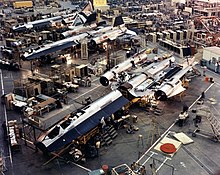








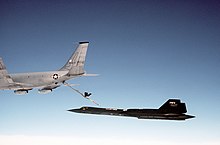




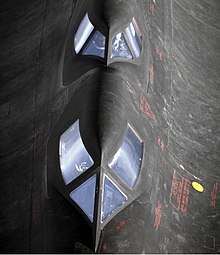
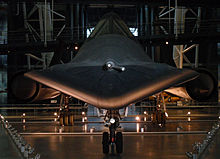



No comments:
Post a Comment